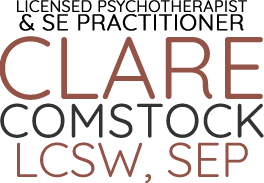Mindfulness and Meditation
The art and practice of observing our mental, emotional, and physical states
 Mindfulness, as I think of it, is the art and practice of observing our mental, emotional, and physical states.
Mindfulness, as I think of it, is the art and practice of observing our mental, emotional, and physical states.
Mindfulness is the cultivation of an inner witness that can be present, in any given moment, with what is going on in our internal world. The constantly shifting cognitive, emotional, and physical states can be noticed and given space. Instead of being caught up in or identified with our thoughts and emotions, and impulses, there is the opportunity to observe them and begin to relate to them. Instead of unconsciously reacting and acting out in the outer world, or trying to repress and deny what is present, we can sit with ourselves and find our ground again.
This brings the possibility of relating to our inner experience, rather than from it; neither repressing nor acting out. We can begin to see what triggers us, what patterns we play out, what ways we try to protect ourselves from what has felt difficult or overwhelming. We can respond rather than react. Choice can enter as our capacity to be with what is difficult expands. Something new can emerge. The nervous system can reset, which I talk more about in the Somatic Experiencing section.
The Buddhists often describe Mindfulness as the return to the present moment. Bringing awareness back to where we are and calling back the mind from its frequent excursions into the past and the future. Thich Nhat Hanh writes “I’ll use the term ‘mindfulness’ to refer to keeping one’s consciousness alive to the present reality.”
Meditation

Meditation has been shown to release stress and help with physical and emotional healing. We can relax our attempts to control and direct our life. We can begin to release our attachment to our thoughts. Jon Kabat-Zinn states, “It is remarkable how liberating it feels to be able to see that your thoughts are just thoughts and that they are not ‘you’ or ‘reality.'” Finding and entering “the gap between the thoughts”, as Deepak Chopra describes. John Welwood writes of “sitting with our present experiencing” and says “As we begin to see through our habitual mind-sets, our attempts to control our experience, we start meeting life more directly….”.

